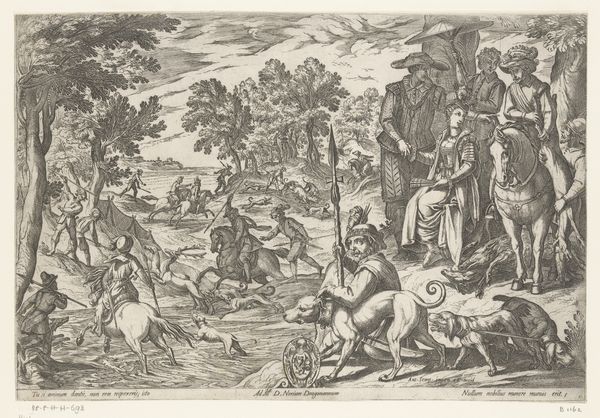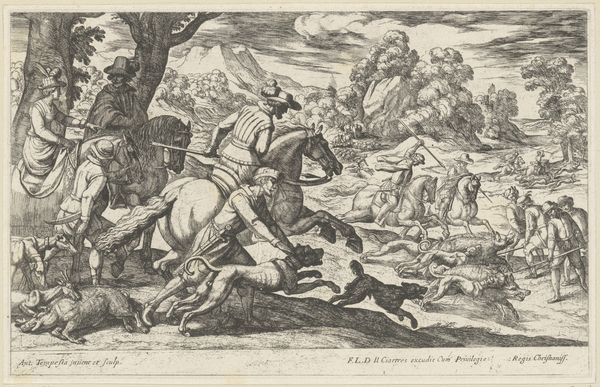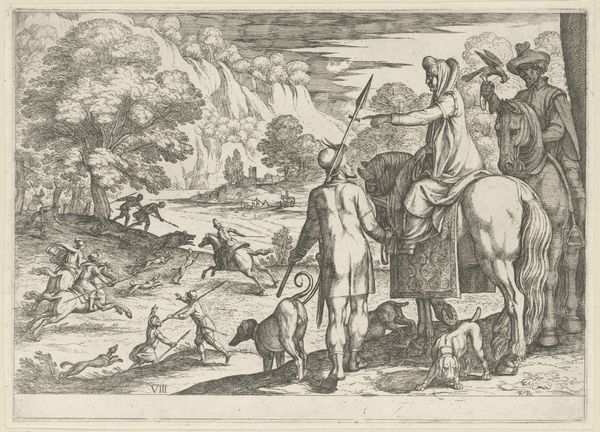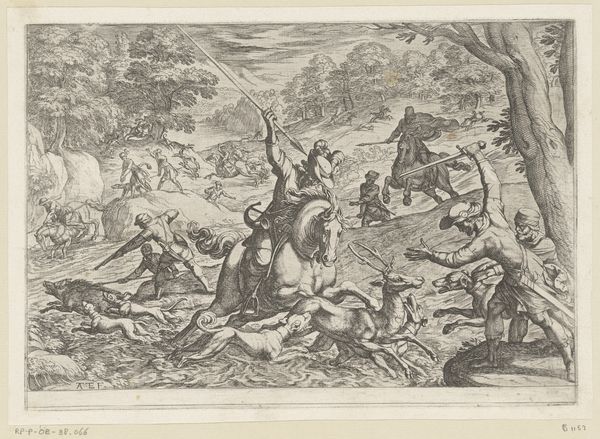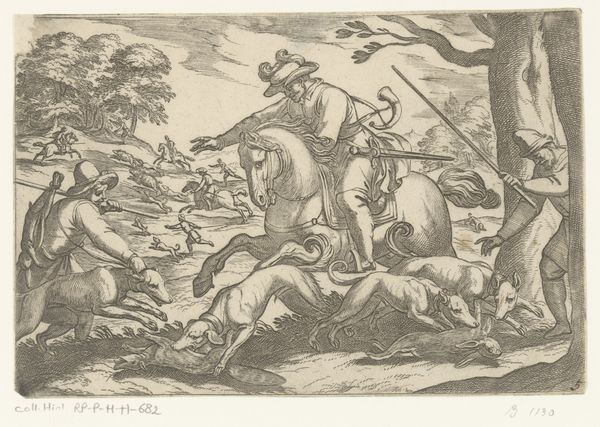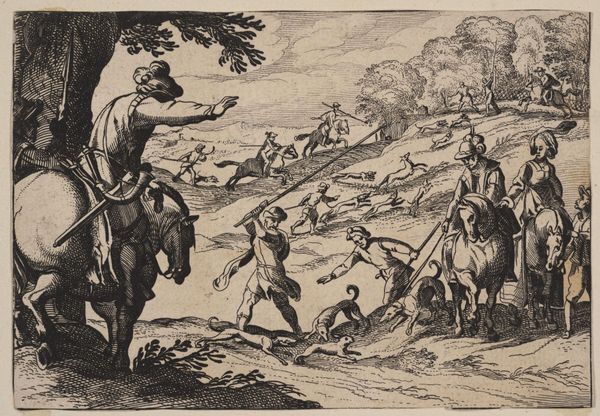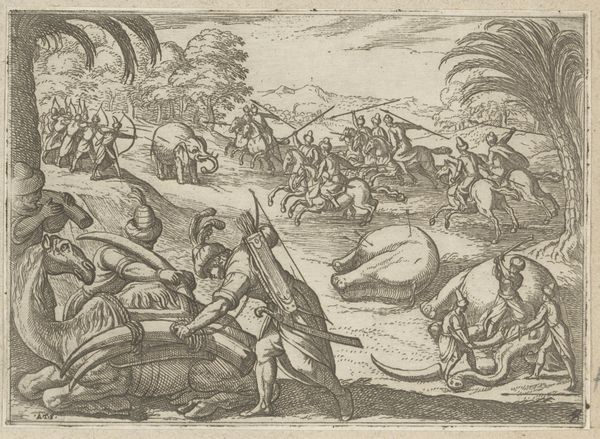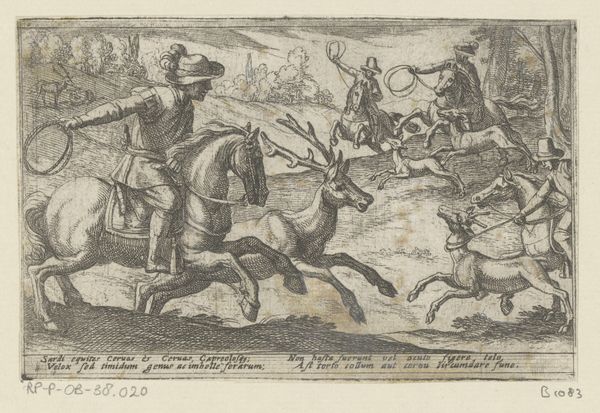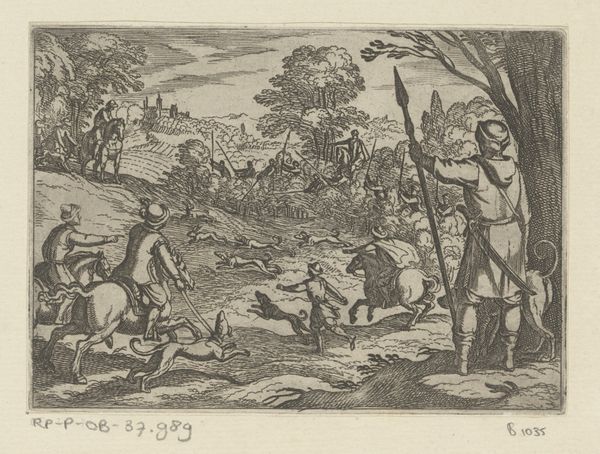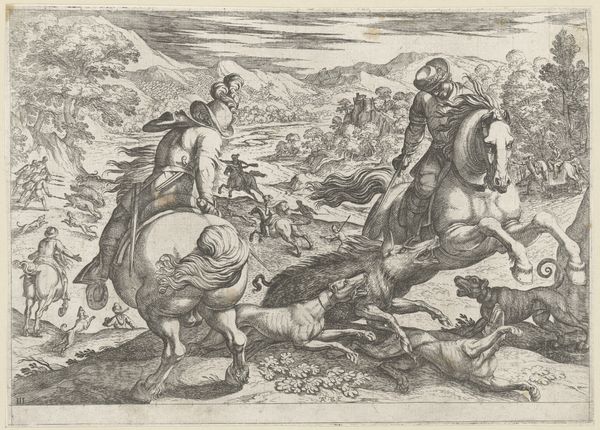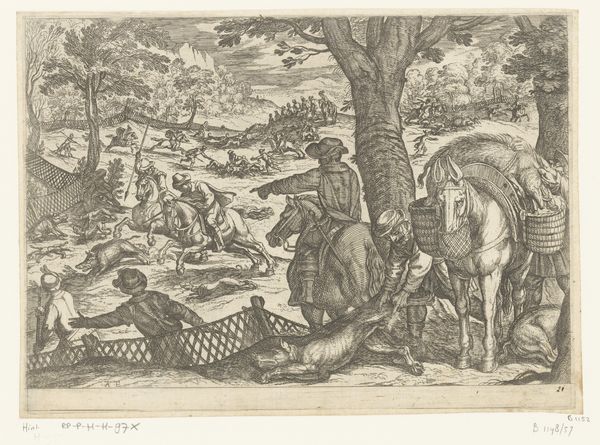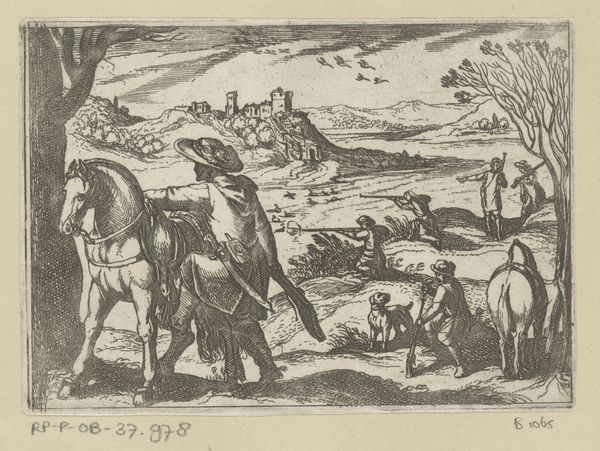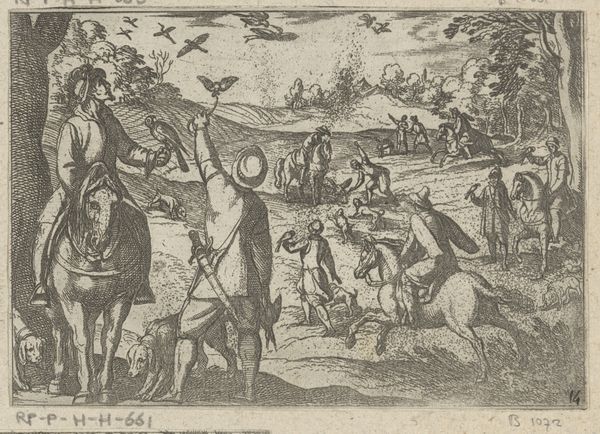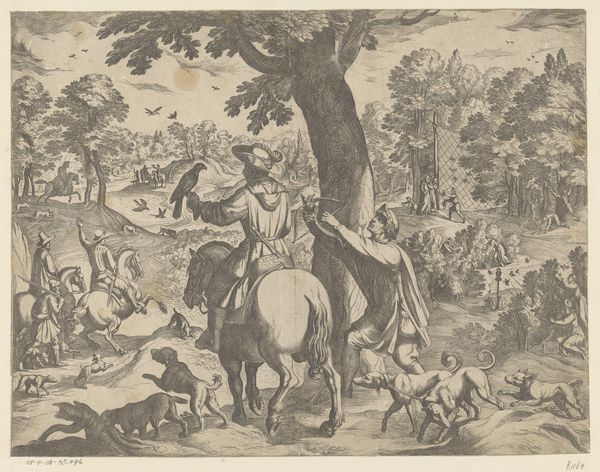
print, engraving
# print
#
pen sketch
#
landscape
#
mannerism
#
figuration
#
line
#
genre-painting
#
history-painting
#
engraving
Dimensions: height 83 mm, width 122 mm
Copyright: Rijks Museum: Open Domain
Curator: This engraving, titled "Jacht op hazen en een hert," or "Hunt for Hares and a Deer," was created by Antonio Tempesta around 1595. It resides here at the Rijksmuseum. Editor: My first impression is that this is a very active scene, chaotic even. It feels crowded with figures, animals, and energy, despite the limitations of a linear engraving technique. Curator: Exactly. And if we situate Tempesta's work within the late 16th century, the Mannerist style shines through. Observe the stylized, elongated figures of the hunters and their exaggerated poses, embodying an aesthetic that privileged artifice over naturalism. This was, after all, an era defined by artistic license after the Renaissance. Editor: Yes, the 'hand' of the artist is very present. I'm drawn to the materiality. Look at how he coaxes different textures from simple lines – the soft fur of the hounds, the rough bark of the trees, the smooth skin of the horses. It all speaks to Tempesta’s mastery of the engraving process itself, manipulating the copper plate. This emphasis brings focus on what it is, and what went in, to make it. Curator: Indeed. But let’s consider the hunting theme, too. Hunting wasn't merely sport; it was a potent symbol of power, aristocracy, and even gender. In this composition, the presence of women among the hunters subtly alludes to changing social roles. But are these female figures actually wielding power, or just props within a patriarchal theatre? Editor: The labor involved is easily ignored when considering the status symbol of the hunt. Who raised the horses? Who cared for the dogs? Even producing an image like this involved a whole workshop. And the consumption it represents, the impact on the animals themselves...it invites difficult questions about the relationship between the aristocracy, labor, and nature. Curator: Certainly, Tempesta’s piece encourages critical examination of both social structures and representational practices of his time. It shows, or even implies, the labor conditions of workers as much as the hunt. Editor: Looking closer at the material processes and underlying social forces makes me rethink my first, simple response of feeling energized by its "activity." The print now reveals to me the many systems, humans and objects, that brought this very active scene into being.
Comments
No comments
Be the first to comment and join the conversation on the ultimate creative platform.
